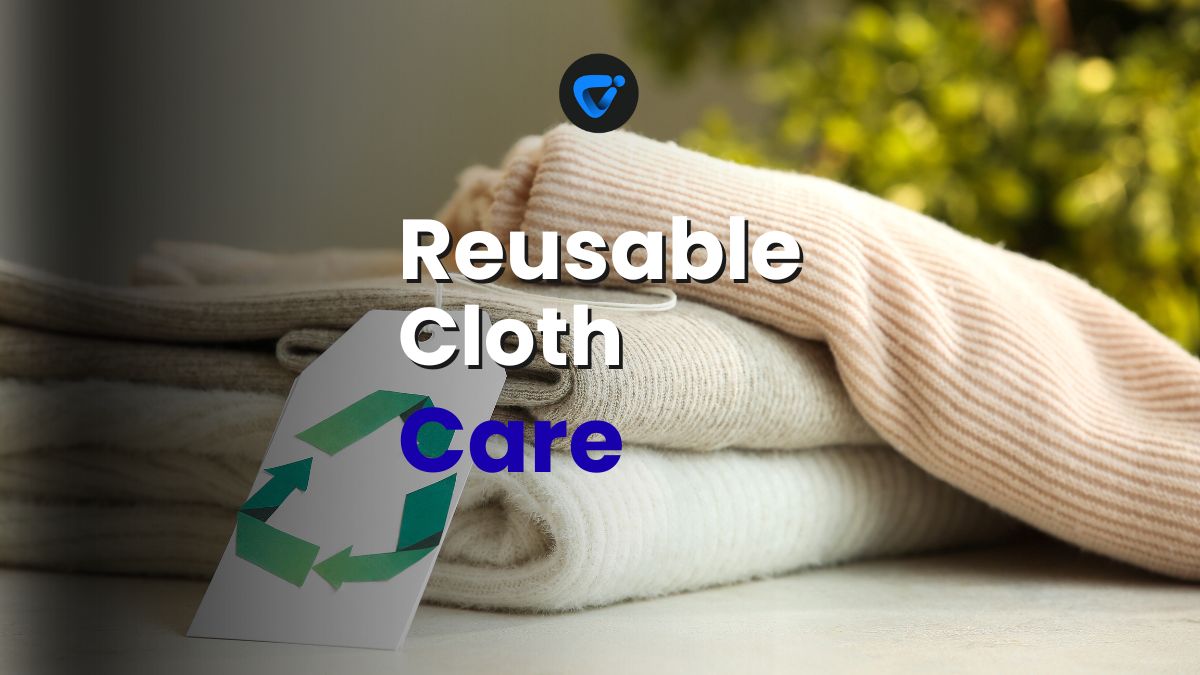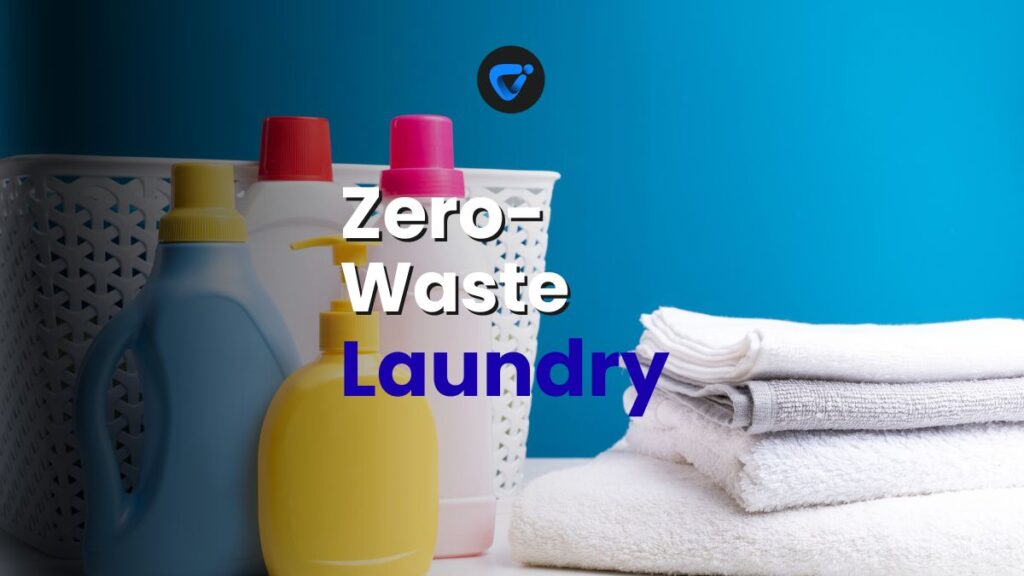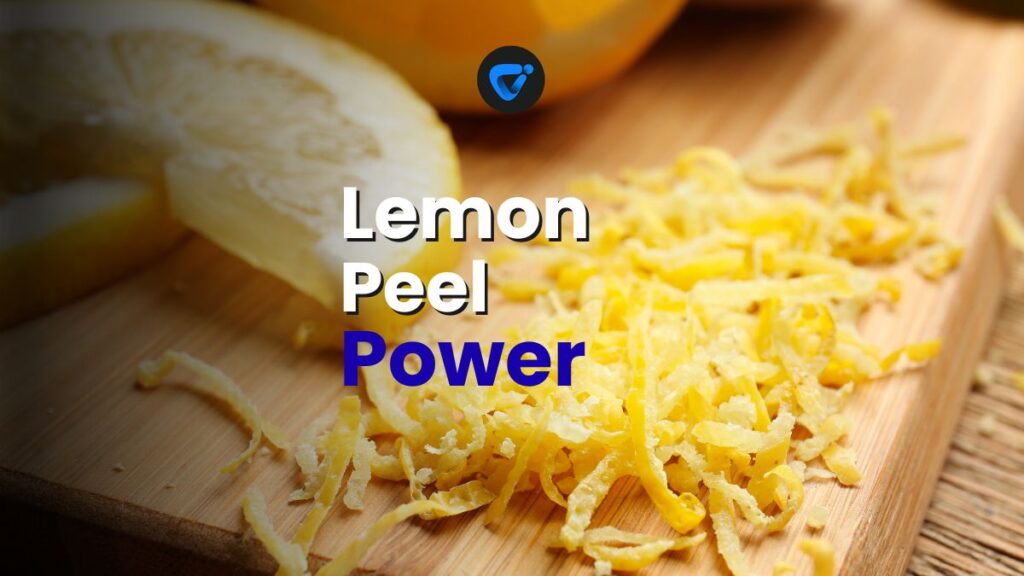
The laundry room is often the most overlooked source of waste in the modern home. Between plastic jugs, perfumed pods, and chemical softeners, an ordinary washing routine can create hundreds of pieces of single-use packaging each year. But cleaning clothes doesn’t have to cost the planet.

Reusable Cleaning Cloths
Clean greener and smarter! Discover the best eco fabrics, care tips, and simple wins for reusable cleaning cloths.
Enter soap nuts and DIY laundry detergent — two simple, low-impact solutions that deliver the same results without synthetic chemicals, heavy fragrances, or disposable bottles. They’re affordable, customizable, and gentle on both fabric and skin. More importantly, they represent a quiet rebellion against over-packaged convenience culture.
This guide walks you through every step — from how these natural agents work, to performance comparisons, storage tips, and even the psychology behind sustainable cleaning habits.
Evaluating the Essentials: What Both Solutions Require
At first glance, soap nuts and DIY detergent might seem worlds apart — one is a fruit shell, the other a powder you mix at home — yet both share the same foundation: minimalism, reusability, and control over what touches your clothes and skin.
| Aspect | Soap Nuts | DIY Detergent | Practical Takeaway |
|---|---|---|---|
| Setup Time | Minimal (buy, bag, and use) | 5–10 minutes (mix ingredients) | Both fit neatly into a weekend reset routine |
| Reusable? | Yes (up to 5 loads per batch) | No (fresh powder each cycle) | Soap nuts offer short-term reuse; both reduce waste |
| Trial and Error | Adjust number of nuts | Adjust cleaning power | Expect minor experimentation early on |
| Plastic Waste | Zero (bulk or compostable) | Very low (bulk ingredients in glass jars) | Both slash plastic consumption |
| Scent Options | Mild, natural | Fully customizable | DIY gives fragrance control |
Neither method demands a major lifestyle overhaul. They simply replace industrial chemistry with biology and basic mineral science.
The Science Behind Natural Cleaning
Soap nuts, also called soapberries, contain saponin, a natural surfactant that releases when agitated in water. These mild suds bind to dirt and lift it from fabric fibers — the same mechanism as synthetic detergents, minus petroleum-derived chemicals.
DIY detergent, by contrast, works through alkalinity. Ingredients such as washing soda and baking soda alter the water’s pH, loosening grease and neutralizing odors. When combined with finely grated natural soap, the result is a cleaner that rivals store brands without the additives.
Together, these methods demonstrate a principle at the heart of zero-waste living: understanding function rather than brand. Once you see what makes cleaning possible — surfactants, pH balance, agitation — you can recreate it easily and sustainably.
Gathering Your Starting Supplies
Everything you need is simple, inexpensive, and widely available.
For Soap Nuts
- 1 bag (100–250 g) of dried soap nuts
- Small muslin or cotton bag per wash
- Glass jar or tin for dry storage
- Optional: 3–5 drops of essential oil per load (added to rinse cycle)
For DIY Detergent
- 1 cup washing soda (sodium carbonate)
- 1 cup baking soda (odor neutralizer)
- 1 grated bar of Castile soap
- ½ cup borax (optional booster)
- Airtight glass jar for mixing
- Essential oils for fragrance (lemon, lavender, or eucalyptus)
Both can be assembled in under ten minutes — and stored for months.
Making the Shift Feel Natural
Adopting a new routine works best when it feels familiar. Think of this transition not as replacing your detergent, but as re-learning a process your grandparents likely practiced.
Start small:
- Choose one day per week to use natural detergent.
- Observe results on texture and smell.
- Adjust ratios slowly rather than switching overnight.
- Keep both solutions visible near the washer — convenience fuels consistency.
After a few cycles, you’ll realize how effortless this sustainable habit becomes.
Day-to-Day Use: What to Expect
Natural detergents demand small tweaks, but deliver reliably clean clothes once dialed in.
Step-by-Step Routine
- Fill the detergent compartment as usual.
- For soap nuts, place 4–6 nuts in a small cloth bag and toss directly into the drum.
- After washing, remove and air-dry the nuts; each batch lasts 4–5 cycles.
- For DIY detergent, use 2 tablespoons per regular load.
- Add vinegar to the rinse cycle for natural softening and odor control.
- Air-dry when possible; clothes retain softness and natural scent.
☀️ Sunlight naturally disinfects fabrics and enhances brightness without bleach.
Adapting to Different Fabrics and Loads
No one detergent fits every material, but flexibility is part of the charm.
| Fabric Type | Recommended Method | Notes |
|---|---|---|
| Delicates (silk, wool) | Soap nuts | Gentle, low-sudsing |
| Everyday cotton | Either | Adjust strength to soil level |
| Towels & linens | DIY detergent | Handles heavy soil |
| Activewear | Soap nuts + vinegar rinse | Removes odor effectively |
| Baby clothes | DIY (unscented) | Hypoallergenic and mild |
Quick Fabric Tips
- Pretreat stains: Apply natural soap directly on damp fabric.
- Boost large loads: Add an extra soap nut or spoon of powder.
- Cold water washes: Pre-dissolve DIY detergent in warm water first.
- Odor control: Vinegar neutralizes bacteria responsible for musty smells.
Each adjustment helps the system evolve around your household rhythm.
Cost and Convenience Compared
Over a year, the savings are undeniable.
| Metric | Conventional Detergent | Soap Nuts | DIY Detergent |
|---|---|---|---|
| Average yearly cost (family of 4) | $120–150 | ~$30 | ~$25 |
| Packaging waste | High (plastic jugs) | None | Minimal |
| Shelf life | 6–12 months | Indefinite if dry | 12+ months |
| Effort level | Pour & go | Minimal prep | 10 min mixing |
Soap nuts shine for simplicity; DIY detergents excel in customization. Both slash long-term spending while aligning with minimalist living.
Performance and Results
The first few washes often surprise skeptics — natural methods clean remarkably well when measured against commercial formulas.
Stain and Soil Removal
- Soap nuts lift dirt through natural saponins; best for everyday loads.
- DIY detergent excels at deeper grime and oil stains thanks to alkaline minerals.
- Combine both occasionally: soap nuts for washing, DIY powder as pretreat.
Odor Management
- Soap nuts produce nearly scent-free laundry, perfect for sensitive users.
- DIY detergent allows aroma control: add essential oils directly to powder or rinse compartment.
- Vinegar or lemon oil acts as a deodorizing booster for gym clothes and kitchen towels.
🧺 Expect a fresher, lighter feel on fabrics — free from chemical residue and heavy perfumes.
The Environmental Impact
Traditional detergents, though effective, have hidden costs:
- Plastic waste: Billions of detergent containers end up in landfills yearly.
- Water pollution: Synthetic surfactants and phosphates harm aquatic life.
- Carbon footprint: Industrial production and transport add emissions.
By contrast, soap nuts are harvested fruits that biodegrade fully, and DIY detergents rely on mineral ingredients mined or derived naturally.
Environmental Snapshot
| Factor | Conventional | Zero Waste Methods |
|---|---|---|
| Packaging | High, non-recyclable | Compostable or reusable |
| Chemical runoff | Toxic to waterways | Harmless, biodegradable |
| Energy footprint | Factory production | Home-mixed, minimal |
| Waste reduction | Low | 90–100% decrease |
Small changes, multiplied across households, can collectively divert tons of plastic and wastewater contaminants every year.
Beyond Cleaning: The Psychology of Sustainable Habits
Zero-waste laundry isn’t just a physical shift — it’s mental. When you see glass jars instead of plastic jugs, you become more mindful of consumption. Each refill reminds you that convenience can coexist with care.
Psychologists call this habit stacking — pairing a new eco-habit with an old one. For instance, when you fold laundry, you might naturally refill your jar or check your soap nut supply. Over time, sustainability becomes part of your rhythm rather than a chore.
🌱 Each load is both a cleaning act and a quiet vote for the planet.
Everyday Challenges and Solutions
Transitioning to natural cleaning includes experimentation — and that’s part of its appeal.
Troubleshooting
- Graying whites: Add ½ cup baking soda or hydrogen peroxide booster monthly.
- Residue: Reduce soap amount or use an extra rinse.
- Cold-water performance: Pre-dissolve DIY detergent before adding.
- Soap nut bag tearing: Replace every few months; compost old ones.
- Hard water issues: Add 1 tablespoon vinegar or citric acid to balance minerals.
Keep a small laundry log to track what works best — it turns observation into mastery.
Seasonal Adjustments
Natural cleaners behave differently as temperature and humidity shift.
- Winter: Pre-dissolve powders and dry soap nuts thoroughly to avoid mold.
- Spring: Refresh stockpiles; infuse new citrus or herbal scents.
- Summer: Line-dry whenever possible — sunlight is nature’s sanitizer.
- Autumn: Use warm washes for heavy fabrics; store ingredients in airtight jars to prevent clumping.
Treat your laundry routine as seasonal maintenance — adapting naturally, just like the ingredients themselves.
Integrating Zero Waste Laundry Into Family Life
Sustainability thrives when shared. Teaching children or roommates to use natural cleaners fosters awareness and teamwork.
Encouraging Participation
- Let family members decorate glass jars with labels.
- Assign a weekly “refill day” or laundry monitor.
- Gamify the process: track how many plastic jugs you avoid in a year.
- Offer scent “profiles” — citrus week, lavender week, mint week — to keep it fun.
When everyone participates, the system sustains itself. Zero waste becomes a family identity, not a solo project.
Storing, Labeling, and Longevity
Organization turns sustainability into a pleasure.
- Label each jar with ingredients, ratios, and date mixed.
- Store soap nuts in breathable containers — not sealed plastic — to prevent moisture buildup.
- Keep DIY detergent in a dry, shaded cabinet; shake occasionally to prevent clumping.
- Refresh essential oils every few months for scent renewal.
Proper care ensures both methods stay fresh indefinitely and remain ready for spontaneous “laundry reset” days.
Historical Roots: Old Wisdom, Modern Context
Before synthetic detergents appeared in the 20th century, households across continents used natural surfactants and minerals:
- India and Nepal: Soap nuts (Reetha) were everyday laundry staples.
- Ancient Egypt: Natron (a naturally occurring soda ash) cleaned fabrics and preserved linens.
- 19th-century Europe: Vinegar and grated soap were common stain removers.
By returning to these methods, modern zero-waste advocates aren’t reinventing the wheel — they’re reviving a legacy of mindful domestic care using local, biodegradable resources.
Long-Term Impact: Tracking Environmental Wins
One household might feel small, but over time the numbers tell a story.
- Replacing detergent bottles with bulk ingredients saves 15–20 lbs of plastic annually.
- Greywater from natural washing can safely water plants, reducing waste water output.
- Switching 10% of households to these methods would remove millions of plastic jugs from waste streams every year.
By keeping a simple “eco ledger,” families can visualize savings — water, plastic, energy — making environmental progress tangible and motivating.
Bringing Zero Waste Laundry Into Daily Life
Adopting soap nuts or DIY detergent is less about perfection and more about presence. It’s the slow satisfaction of crafting something useful, of watching clothes emerge clean without synthetic foam, and of knowing your choices align with your values.
In a world of instant convenience, pouring your own mix or tying a small muslin bag becomes an act of quiet defiance — a return to intentional living.
With every wash:
- You reduce waste.
- You protect waterways.
- You teach by example.
- You rediscover the elegance of simplicity.
🧺 Zero-waste laundry isn’t about doing everything — it’s about doing one thing better, over and over, until it becomes second nature.
Quick Reference Summary
| Step | Goal | Tip for Success |
|---|---|---|
| Choose your method | Reuse and reduce waste | Start small and alternate methods |
| Prepare supplies | Keep materials visible | Store in labeled glass jars |
| Test ratios | Find perfect strength | Record results in a notebook |
| Wash & rinse | Clean effectively | Add vinegar for softness |
| Maintain rhythm | Build habit | Make it a weekly ritual |
| Share results | Build awareness | Teach others, swap recipes |
Closing Reflection
When laundry day stops being a disposable routine and becomes a mindful ritual, you start to see that sustainability isn’t distant or abstract — it’s as close as your next wash cycle.
Soap nuts and DIY detergent prove that progress can be natural, gentle, and deeply personal. Your laundry becomes a canvas for change — one load at a time. 🌿✨
Frequently Asked Questions
Dry soap nuts fully between washes to prevent mold. Store them in a cool, dry jar or cloth bag near your machine. Label the bag so you can track how many cycles each batch has handled if you’re sharing the system.
Yes, with some tweaks. Use an extra soap nut seed or add more washing soda for workwear. Pretreat visible stains using bar soap and spot cleaning, then wash as usual for strong results. Double-check before drying to avoid setting stains.
Yes, both soap nuts and DIY detergents use minimal ingredients without added fragrances or dyes. To double-check, test a small load with your favorite blend. Many people with sensitivities prefer zero waste laundry to avoid chemical irritation.
Absolutely. Both soap nuts and homemade powder work with HE machines. Use half to two-thirds the usual amount of detergent for your washer size. Confirm with your manual for best results, but generally, both fit these low-water systems well.
Water quality affects cleaning strength. In hard water, add a bit more washing soda for DIY powders or increase soap nuts by one seed. If you notice residue or grayness, try a vinegar rinse and adjust your recipe card for local water conditions.

Composting Basics for Everyday Kitchen Scraps
Turn scraps into soil! Learn composting basics to recycle kitchen waste and create nutrient-rich compost at home.


